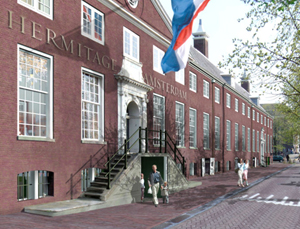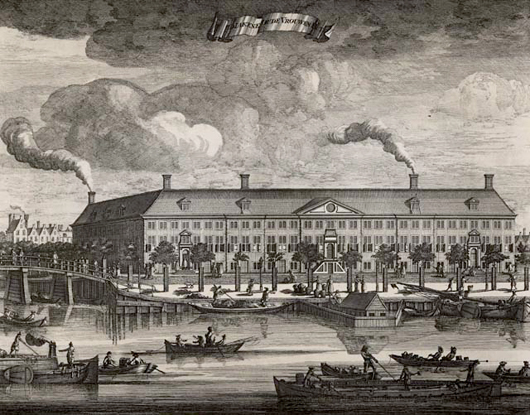
AMSTERDAM (AP) – The Hermitage is exhibiting czarist opulence at the opening of a new branch in Amsterdam, the city where Peter the Great started Russia’s fabulous state art collection 300 years ago and which inspired the design for his own capital, St. Petersburg.
Russian President Dmitry Medvedev and Queen Beatrix of the Netherlands formally opened the Hermitage Amsterdam on Friday, June 19, 2009.
The museum is in a former nursing home known as the Amstelhof, which was built in the 1680s, about 15 years before the Russian czar first visited the Dutch capital to study shipbuilding. It remained a retirement facility until the last patient left two years ago.
“Peter the Great would be happy with this,” Hermitage director Mikhail Piotrovsky told reporters Thursday.
Friday’s closed gala event concluded with a public orchestral concert from a pontoon stage on the Amstel River in front of the building. The museum opened to the public Saturday morning.
More than 1,800 items on loan from the Winter Palace in St. Petersburg give a vivid depiction of the court of the Romanovs from the 18th century until the 1917 revolution, when Czar Nicholas II was dethroned and ultimately executed with his family.
On display are lavish gowns, jewelry, hats and fans that women wore at balls that were staged up to 40 times a year during the heyday of czarist power. The formal men’s attire, usually blazing red jackets, were designed according to aristocratic rank, with the precise number of gold threads dictated by protocol drawn up by the 19th-century Czar Nicholas I.
A gilded piano painted with more than 100 human figures in pastoral scenes, a gift of the last czar to his wife, dominates one of two long exhibition halls. In a side gallery is a 42-piece silver toilet set favored by the czarinas. Another displays tiny military uniforms and small rifles carried by royal children.
Piotrovsky said the Amsterdam project is part of a global strategy to make some of the museum’s 3 million objects more accessible to the world.
“Together we are creating a new cultural product,” he said.
Amsterdam Mayor Job Cohen told The Associated Press he expected the Hermitage will have “incredible attraction power,” encouraging cultural tourists to stay an extra day in a city that already has several world-class museums.
The two-year makeover of the Amstelhof building cost euro40 million ($50 million), financed by the state lottery, corporate and private donors and the city of Amsterdam, said Ernst Veen, director of the new museum.
Veen said corporate sponsors had pledged to underwrite half the operating costs for the next five years, with the other half derived from entrance fees.
The Hermitage closed a London branch in 2007 because of financial problems.
Catherine the Great is usually credited with creating the Hermitage and its renowned collection. But Veen said it was Peter I, who visited Holland twice for lengthy periods starting in 1696, who started the state collection by acquiring 220 Dutch masters.
The Amsterdam museum will have two rotating exhibitions a year, drawn from the Russian state museum’s broad collection of classical and modern art. The current project, titled At the Russian Court: Palace and Protocol in the 19th Century, closes in January, and will be followed by a Matisse and Picasso exhibition opening in March 2010.
Copyright 2009 Associated Press. All rights reserved. This material may not be published, broadcast, rewritten, or redistributed.
AP-CS-06-18-09 1321EDT
ADDITIONAL IMAGE OF NOTE


